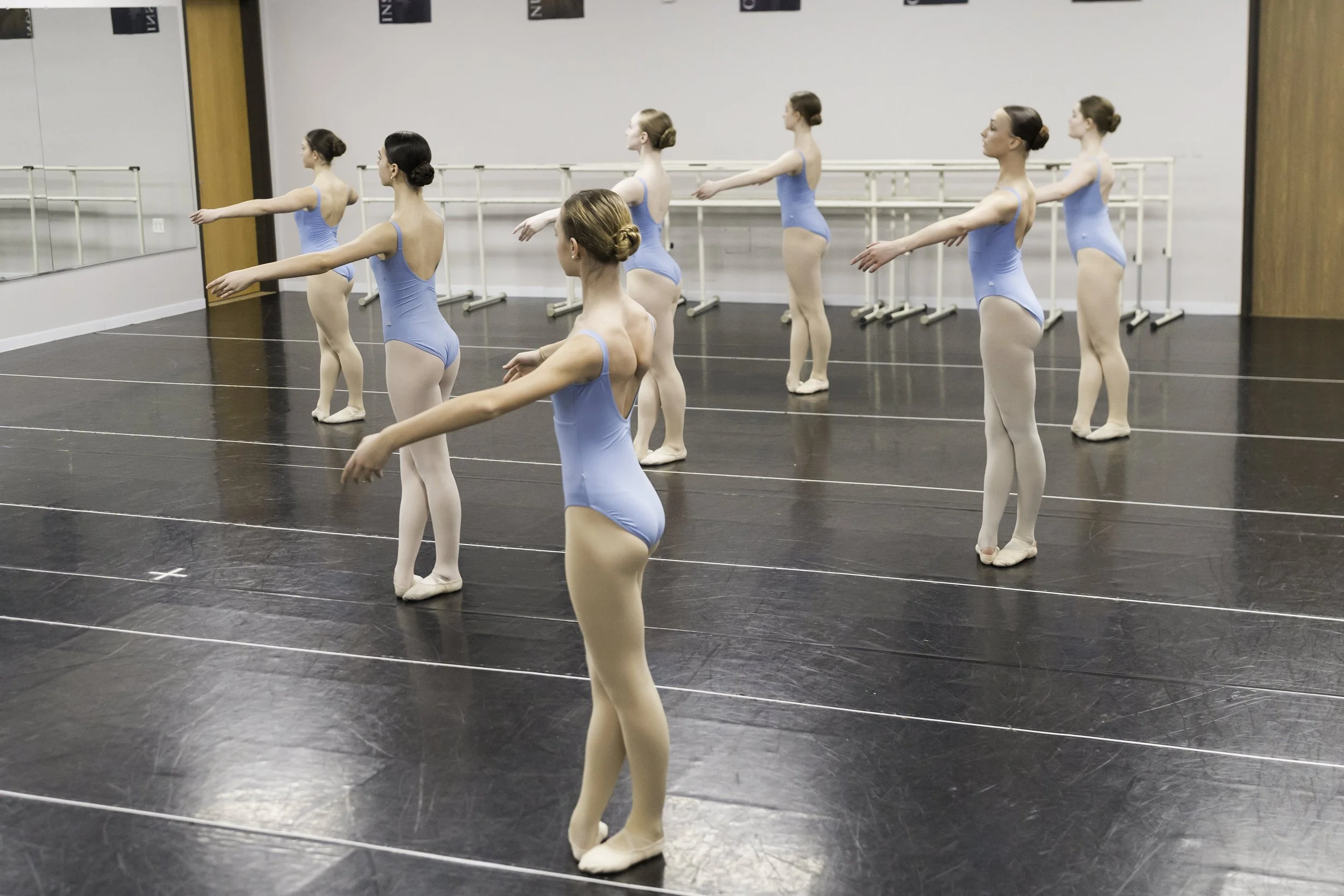
The Cecchetti Method: Classical Ballet with Purpose
At Ann Parsley School of Dance, we are proud to offer comprehensive training in the Cecchetti Method of Classical Ballet—a time-honored system known for its disciplined approach and exceptional results. Rooted in anatomical principles, the Cecchetti Method develops a dancer’s balance, poise, strength, elevation, and elasticity, while instilling artistry and musicality from the very first plié.
We offer instruction in the Cecchetti syllabus, from early childhood through professional certification. In addition, we provide toddler and beginning ballet classes to lay a strong and joyful foundation for young dancers. Several APSD instructors are also certified for teacher training and certification through the Cecchetti Council of America (CCA).
All Cecchetti ballet classes at APSD are taught by certified instructors who have successfully completed teacher examinations through the Cecchetti Council of America (CCA).
CECCHETTI METHOD

CECCHETTI LEVELS
-
Early Childhood Development
The Cecchetti Council of America offers three pre-syllabus Examinations designed specifically for young children. These levels focus on developing poise, musicality, coordination, and confidence in a fun, creative environment. The material encourages student enjoyment and imaginative expression, with examinations led and guided by the teacher throughout. These foundational levels lay the groundwork for disciplined and joyful ballet training.
-
Foundational Technique
For dancers beginning a more structured and serious ballet path, Grades I and II emphasize correct anatomical alignment and the placement of the torso, hips, and legs. Students build coordination of the head and arms while learning to move through exercises with graceful transitions and control. These levels establish the technical clarity needed to progress into more complex work.
-
Artistic Maturity & Movement Quality
At this stage, dancers are introduced to a more refined sense of musicality and expression. Grades III and IV focus on strength, stability, and technical precision in elements such as pirouettes and grand allegro. Students work toward greater suppleness and fluidity, with integrated coordination of the head, arms, legs, and body. In Grade IV, dancers perform a one-minute unset solo, allowing them to explore performance, phrasing, and choreographic interpretation.
-
Elementary Syllabus & Professional Foundation
The Elementary Syllabus (Grade V) marks the entry into the professional Cecchetti levels and serves as a bridge between the graded work and the advanced classical material of Maestro Enrico Cecchetti. Students demonstrate a mature approach to adage, pirouettes, and allegro, along with the introduction of pointe work and beats. This level reflects a culmination of the technical and artistic development gained throughout the lower grades.
-
Grades VI, VII & Diploma – Intermediate to Advanced Professional Syllabus
The Cecchetti Council of America’s Intermediate, Advanced, and Diploma syllabi are maintained in conjunction with the Imperial Society of Teachers of Dancing (ISTD) in London, England. These prestigious levels are recognized across the world by the seven international Cecchetti societies, preserving the rich legacy of Enrico Cecchetti’s work.
These advanced syllabi include elegant adagios, refined pirouettes, intricate allegro, and virtuoso jumps and beats, demanding precision, artistry, and control. Dancers continue to develop clean classical lines, strong placement, and expressive presence, representing the culmination of the Cecchetti Method’s time-tested training philosophy.
Ann Parsley School of Dance proudly offers the Cecchetti method as a foundational tool for serious ballet students. The Cecchetti syllabus (Primary I–III and Grades I through Diploma) ensures the structured, progressive development of a dancer’s technique, musicality, and artistry.
Examinations for Grades I and above take place each March. Dancers are typically eligible to test after multiple years of consistent training in a level.
Who Can Take an Exam?
Dancers are evaluated for exam readiness based on technique, consistency, and maturity—not simply time spent in a level.
To be considered for an exam, students must attend at least two ballet classes per week in the grade they wish to test.
Excellent attendance and home practice are expected.
Exams are not required for advancement but can be a valuable goal.
Readiness & Teacher Recommendation
A dancer may express interest in taking an exam, but final decisions are made by APSD’s Cecchetti faculty—typically in February—after careful observation of each student’s technical execution and understanding of the syllabus. Please trust and respect your teacher’s professional judgment.
Exam Benefits
Establishes clear goals and measurable milestones
Builds discipline, confidence, and artistry
Motivates students to refine their technique
Offers personalized feedback from Cecchetti Council of America (CCA) examiners
Dancers interested in testing should notify their instructor early in the season, begin attending two classes per week in their exam level, and purchase a grade book from the front desk.
At APSD, we value the individual journey of every dancer. While some students thrive through testing, others progress beautifully without it. Either path allows for growth—and we’re here to support that development every step of the way.
